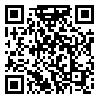BibTeX | RIS | EndNote | Medlars | ProCite | Reference Manager | RefWorks
Send citation to:
URL: http://jha.iums.ac.ir/article-1-329-en.html
Introduction: An assess performance is a systematic and comprehensive process about comparing organizations activities and process with achieved results based on EFQM model. Assessing performance process allows organization to identify clearly strength points and designing plans for improvement. Hence, the purpose of the present research was to compare self assessment results based on European Foundation for Quality Management with two approaches of questionnaire and Performa on human resources management at Isfahan University of Medical Sciences (IUMS).
Methods:This research was descriptive - cross sectional study, carried out at human resource management of (IUMS) in academic year 2006-2007. Study population is 32 staff managers and their deputies selected by census sampling. Data collecting are a standard questionnaire and a designed Performa based on EFQM model, and collected data were analyzed using SPSS and EFQM software.
Results: Total score of assessment human resource management(IUMS) based on questionnaire and Performa were 550and 516 respectively and scores percentage for each nine factors were as follows : Leadership 65 and 61 , Policy 80 and 75, employees results 50 and 43 , employees results 30 and 29 , community results 60 and 55, and key performance results 50 and 52 percent.
Conclusion: Through EFQM model, we can identify strength points and area for improvement that help organization and activities to focus on most benefits area for organization and intervention and changes are followed.
Received: 2009/05/6 | Published: 2009/01/15
| Rights and permissions | |
 |
This work is licensed under a Creative Commons Attribution-NonCommercial 4.0 International License. |





